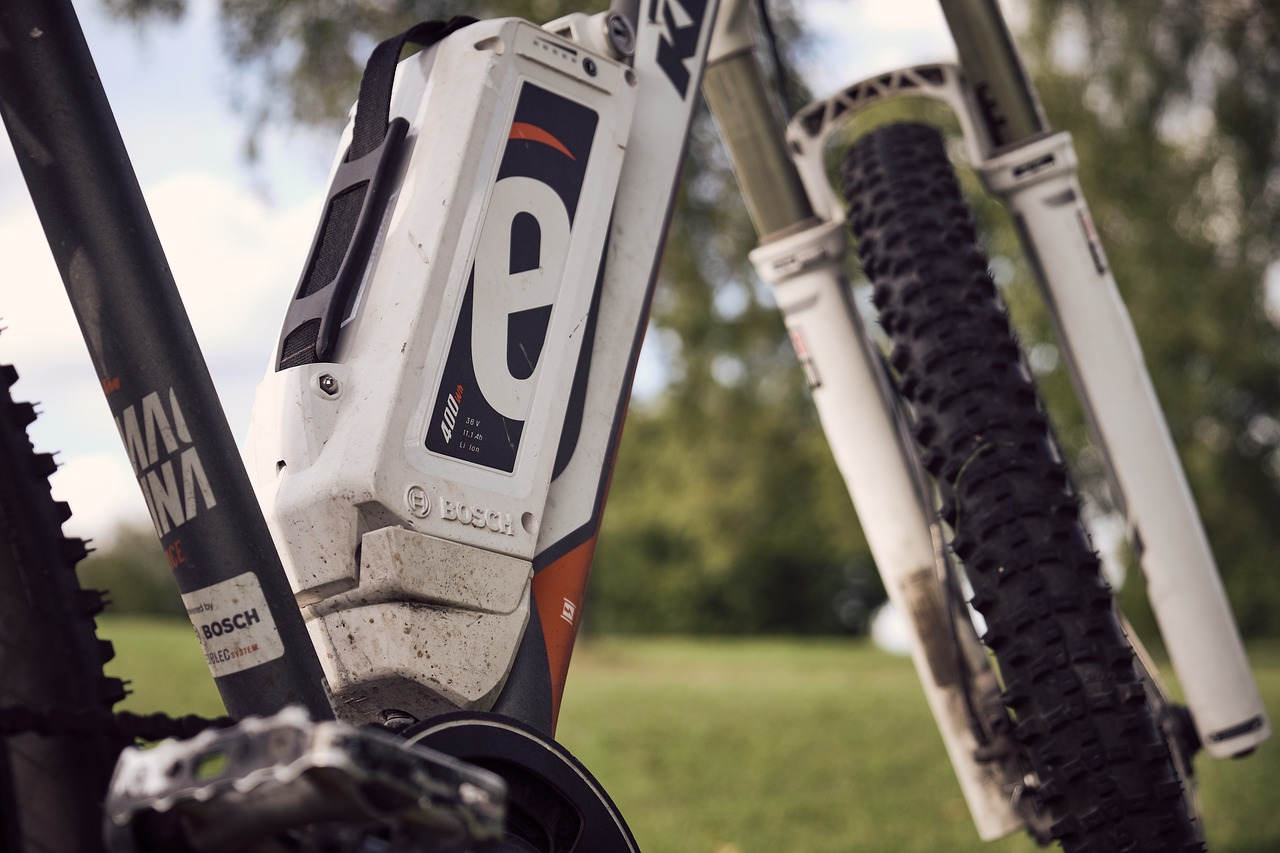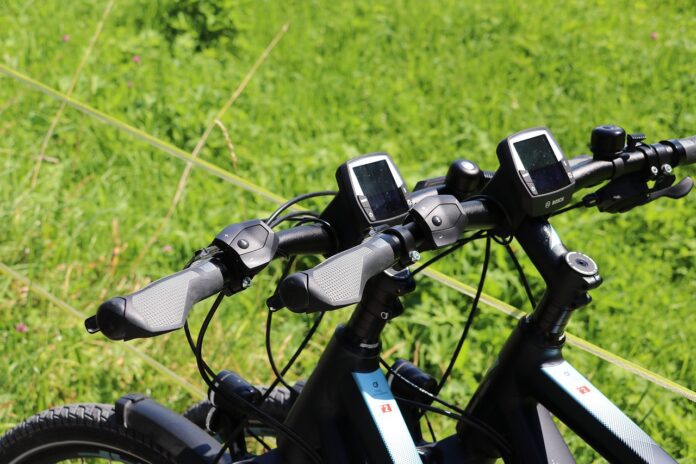Have you recently bought your first electric bike or noticed someone riding one in your neighborhood and wondered exactly how they work? Unlike conventional bicycles, electric bikes have motors that propel the bike forward. This feature facilitates riders in effortlessly moving over steep hills and covering long distances with minimal exertion.
In this guide, we’ll walk you through the basics of how an electric bike works and help you understand the different components that make it a unique mode of transportation.
What is an Electric Bike?
An electric bike is a standard bicycle enhanced with an electric motor, bringing the eco-friendly and health benefits of conventional cycling with the handiness of motor-driven assistance. Perfect for those interested in covering more ground or tackling steep slopes without breaking a sweat.
Typically, e-bikes feature rechargeable batteries and can achieve speeds between 15 to 20 mph. Nevertheless, the top speeds can differ due to the specific model of the e-bike and the local area’s rules. Furthermore, e-bikes are designed with features like pedal assistance, throttle adjustments, and a range of gears, allowing riders to customize their ride per their preferences.
Different Types of Electric Bikes

There are several types of e-bikes, each designed for different types of riders and uses:
- Pedal Assist (Pedelecs): As you pedal, these e-bikes chip in with added power, increasing your natural cycling effort. They’re perfect for extended trips, challenging terrains, or daily commutes where you might appreciate an extra push.
- Throttle-On-Demand: Think motorcycle vibes. Simply twist the throttle for power – no pedaling required. Of course, you can still pedal away if you’re in the mood.
- Speed Pedelecs: Think of them as the sportier siblings of pedal assist. They aid your pedaling but with a higher max speed. Ideal for those who are always in a rush.
- Electric Mountain Bikes (eMTBs): Built for the thrill-seekers, these e-bikes thrive in off-road conditions, granting you the power to conquer steep terrains and the sturdiness for uneven paths.
- Cargo e-Bikes: Tailored for those with stuff to haul, these robust e-bikes have expansive storage and potent motors to bear added loads.
The electric bike you choose boils down to your unique needs and the kind of biking you’re into. From daily commutes to off-road escapades or gentle city strolls, an electric bike could work for you.
Main Components of an Electric Bike
Understanding the main components of an electric bike can help you make the most of your ride. Let’s explore these crucial parts and their functions.
Electric Motor
Central to the e-bike’s magic is its electric motor. This is where the extra push comes from when you pedal. E-bikes can house the motor in a trio of spots:
- Front Hub: Gives a sensation of being nudged forward.
- Rear Hub: It feels like the bike is pulling you from the back.
- Mid-Drive: Positioned at the bike’s center, it powers the drivetrain directly, ensuring a balanced weight distribution. It’s a popular choice for e-bikes with pedal assistance.
Battery
Fueling the motor is the battery, mostly a rechargeable lithium-ion type – the same kind that powers our everyday gadgets like laptops and smartphones. Depending on the design, it can sit snugly on the bike frame or blend seamlessly into it. With good care and depending on usage, such batteries usually last 2 to 4 years.
Charging is a breeze. Connect it to a regular wall socket, and in about 3 to 6 hours, depending on its capacity, it’s all juiced up and ready to go. Some modern e-bikes even offer detachable batteries, letting you charge them indoors at your convenience.
Pedal Assist System/Sensors
Pedal-assist systems (PAS) use sensors to detect when and how hard you’re pedaling and provide a certain level of motor assistance. Two main types of sensors are used in PAS: speed and torque.
Speed sensors simply detect how fast you’re pedaling, while torque sensors measure how hard you’re pedaling. Bikes with torque sensors generally provide smoother and more responsive motor assistance than speed sensors.
Electric Display/Controller
The electric display or controller allows you to control various settings on your e-bike. This typically includes selecting the level of motor assistance, monitoring battery life, and sometimes even adjusting the top speed. Some advanced displays also offer features like GPS navigation, trip tracking, and connectivity with smartphone apps.
These main components work together to make your e-bike ride smooth, enjoyable, and efficient. Understanding them can help you maintain your e-bike correctly and choose the right e-bike for your needs.
How Does an Electric Bike Work?


Electric bikes may seem complex, but their operation is remarkably straightforward. Here’s a step-by-step breakdown of how your pedaling turns into assisted power on an e-bike.
- Start Pedaling: Unlike a motorcycle or scooter, most e-bikes require pedaling to activate the motor. Pedaling doesn’t directly power the bike but signals the pedal-assist system to kick in.
- Pedal-Assist System Activates: As you start pedaling, the pedal-assist system’s sensors (either speed or torque sensors) start detecting your pedal speed or force. This information is then sent to the e-bike’s controller.
- Motor Assistance Kicks In: Based on the data from the pedal-assist system, the controller activates the electric motor to provide a proportional level of assistance. This means the motor will provide more power if you’re pedaling harder or moving faster. Conversely, the motor will provide less assistance if you pedal lightly or slowly.
- Power Is Delivered: Fueled by the battery, the motor channels energy to the wheels through the front hub, rear hub, or drivetrain, based on its placement. This extra boost complements your pedaling, ensuring a swifter and more effortless.
- Adjust Settings As Needed: While riding, you can use the electric display/controller to adjust the level of motor assistance, monitor battery life, and control other settings. If you’re going uphill or want to go faster, you can increase the level of assistance. If you’re cruising along flat terrain or want to conserve battery, you can decrease it.
- Stop Pedaling, Motor Stops: When you stop, the pedal-assist mechanism alerts the controller to discontinue the motor’s use. Many e-bikes are designed with a feature that automatically deactivates the motor the moment you engage the brakes.
Benefits of Using an Electric Bike
Electric bikes offer many benefits, ranging from environmental and health advantages to cost-effectiveness. Here’s a closer look at some of these key benefits.
Environmental Benefits
E-bikes are an environmentally friendly travel option with fewer emissions per kilometer than their motorbike and car counterparts. Opting for an e-bike over a traditional gasoline-driven vehicle means actively decreasing greenhouse gas outputs, leading to purer air and contributing to a healthier environment.
What’s more, e-bikes excel in energy efficiency. Their energy consumption per mile is notably lower than that of motor vehicles, making them a commendable choice for short hops and daily rides to work.
Health Benefits
Even with the electric assist, riding an e-bike is a form of physical exercise that can help improve cardiovascular health, agility, and strength. E-bikes can make exercise more accessible to people who may find traditional biking too strenuous. They’re also a great way to incorporate physical activity into your daily routine without feeling like a chore.
Moreover, spending time outdoors on your e-bike can positively affect mental health. The fresh air, sunlight, and change of scenery can help reduce stress and boost mood.
Cost-Effectiveness and Commuting Potential
Compared to owning and operating a car, e-bikes are significantly more cost-effective. They require less expensive maintenance, no insurance or licensing (in most areas), and electricity for charging is cheaper than gasoline for cars.
E-bikes can be game-changers for your daily commute. You can easily weave through traffic, reaching your destination at quick speeds that outpace traditional cycling. And the bonus? No more circling searching for parking, especially in bustling city zones.
Electric bikes bring a bunch of perks to the table. Whether you just want to cut down on emissions, boost your fitness level, save some money, or just want a smoother ride to work, e-bikes might just be your ideal choice.

